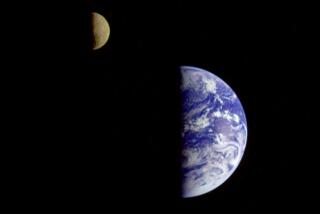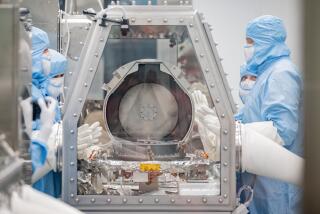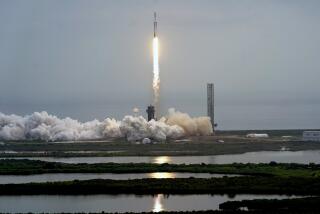Third-grader names asteroid that is focus of NASA mission
- Share via
Asteroid (101955)1999 RQ36 doesn’t really roll off the tongue, but asteroid Bennu? That’s an asteroid that a person, a country and the world can get excited about.
This week, NASA announced that 9-year-old Michael Toler Puzio of North Carolina had won an international student contest to name the asteroid that NASA’s OSIRIS-REx mission plans to sample in 2019.
The third-grader’s entry, Bennu, is the name of an avian deity in ancient Egypt that often takes the form of a blue heron.
“The winged OSIRIS-REx and its heron-like TAGSAM [the mechanism that will collect the sample] also evoke attributes of Bennu, as do the egg shape of the asteroid itself,” Toler Puzio said in a statement.
Bruce Betts, one of the judges of the contest, said the name struck a chord right away, not just because of the spacecraft’s heron-like appearance. “The parallel with asteroids as both bringers of life and as destructive forces in the solar system also created a great opportunity to teach,” he said.
NASA announced the OSIRIS-REx mission in May 2011, describing it as the first U.S. mission to carry samples of an asteroid back to Earth, and a crucial step in meeting President Obama’s objectives to extend human space exploration beyond low-Earth orbit.
“It’s robotic missions like these that will pave the way for future human space missions to an asteroid and other deep-space destinations,” said NASA Administrator Charles Bolden at the time.
Scientists selected the asteroid now known as Bennu as the mission’s destination because its orbit is relatively accessible, it is large enough to sample and it is carbonaceous and may hold the building blocks of life on Earth. Also, scientists are hoping it will be easy to collect a sample from it.
Bennu is about 1,900 feet in diameter, or about the size of five football fields. As of now, the OSIRIS-REx mission is scheduled to launch in 2016, meet up with Bennu in 2019, and return a sample of the asteroid to Earth by 2023.
The naming contest was a collaboration between the University of Arizona, which is leading the OSIRIS-REx mission, the Planetary Society and MIT’s Lincoln Near-Earth Asteroid Research project, which discovered the asteroid.







